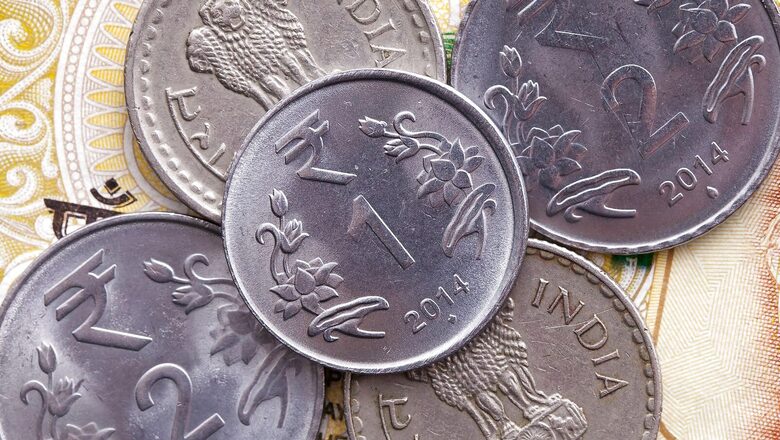
views
Since India is a net importer country, the rupee depreciation aggravates inflationary pressure on the manufacturing sector. The weakening of the rupee, hovering at an all-time high of Rs 81.90 (on Wednesday) against the US dollar, will have disproportionate direct and indirect effects on the Micro, Small, and Medium Enterprises (MSMEs), that have imports denominated in dollars and witness an increase in their input costs.
Recently the Reserve Bank of India has taken several measures to ensure foreign currency inflow and prop up the rupee, such as higher overseas borrowing limits and also a move to allow international trade settlement in the Indian currency. However, the effects of this mechanism are likely to come into play in the long run and not in the immediate future. Thus MSMEs may find themselves amid a real existential crisis. The need of the hour is a separate production-linked incentive (PLI) scheme for them because largely they are outside the ambit of it. Can policymakers do a course correction to compensate for MSMEs’ rising import costs?
The thrust sectors of textiles, pharmaceuticals, automobile components, engineering goods, electronics, industrial chemicals, and food processing heavily depend on imports. The average of all import duties increased from 13.7 per cent to 17.7 per cent are multiple blows for MSMEs, which were already struggling to absorb the Covid fallout.
MSMEs that have a high import dependency and have limited alternate domestic suppliers will be negatively impacted. Data on the import of raw materials and export earnings finds that 45 per cent of MSMEs have a higher import bill than their export earnings. These MSMEs are at a high risk of margin erosion. As per estimates from the International Monetary Fund (IMF), close to 90 per cent of India’s overall import invoices are billed in dollars.
RBI’s effort to globalise rupee a challenge
On July 11, the RBI notified the international trade settlement in Indian rupees but this is a practically difficult task in the quick run as India’s major trading partners may not accept the rupee for international trade settlements. The Indian rupee is accepted informally in neighbouring countries Nepal, Bangladesh, Bhutan, and parts of the Maldives. It is even accepted as a legal tender in Zimbabwe. It was possible because India exports a lot to these countries. ‘Exports’ are the deciding factor in a currency becoming a currency of international trade, not imports.
The majority of India’s trade is being conducted with the US, UAE, China, Singapore, and Saudi Arabia. The dollar has been widely recognised as one of the world’s strongest currencies and is accepted as the currency of choice for international trade transactions by nearly all countries in the world. The dominance of the dollar may be difficult to challenge, at least in the short run.
To give an example of how tough it will be for India to provide rupee as an alternative to the dollar, we can look at the Chinese example. China has put in a lot of effort for several years to make the yuan a contender against the dollar. However, even today, only 3 per cent of global transactions are done through the yuan (as compared to 40 per cent through the dollar). The Indian rupee as of now is not suitable to become a currency of trade. Sustained organic growth is required to become a stabilised international currency.
For Atmanirbharta
MSMEs were hit particularly hard by the Covid crisis, and with the pandemic far from over, the real work of recovery starts in 2022. How India recovers depends greatly on how MSMEs recover. Why? Because this sector has always been crucial to India’s economic health, is the second-largest employment creator, employing an estimated 12 crore people, contributing 30 per cent of the GDP, and accounting for 48 per cent of exports. The MSME ministry announced a target to boost MSMEs’ present contribution to the GDP targeted to 50 per cent by 2025, but the present scenario may delay this.
The inclusion of traders in MSMEs would only encourage imports. So until an incentive is provided, units would prefer to import instead of production. The government has announced a series of incentives for the distressed manufacturing sector under the PLI schemes of an outlay of over Rs 2 lakh crore, which are meant mostly for the big players. If the government wants to accentuate Atmanirbharta (self-reliance) in manufacturing further, a separate dedicated PLI scheme for MSMEs is the best option to offset it as it would not only cut down on huge import bills but reduce dependency on China (16 per cent of the total import from China) and also absorb the country’s growing workforce.
The writer is Vice Chairman of Sonalika Group, Vice Chairman (Cabinet Minister-Rank), Punjab Economic Policy and Planning Board, Chairman, ASSOCHAM Northern Region Development Council. The views expressed in this article are those of the author and do not represent the stand of this publication.
Read all the Latest Opinion News and Breaking News here














Comments
0 comment